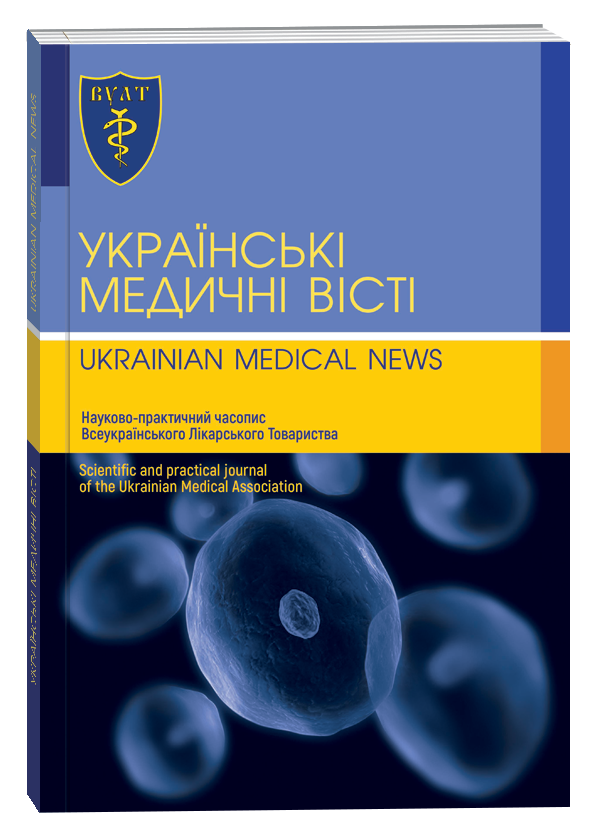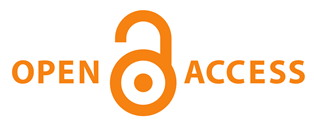BASIC PRINCIPLES AND METHODS OF TELEREALIBITION TO IMPROVE MOBILITY AFTER STROKE
DOI:
https://doi.org/10.32782/umv-2025.1.14Keywords:
telerehabilitation, stroke, principles, methods, mobilityAbstract
Stroke is one of the main medical and social problems of humanity. It ranks second among the causes of mortality and first among the causes of disability in all countries of the world.Stroke patients often face difficulties in home rehabilitation and in developing adequate adherence to rehabilitation therapy. There is a lack of current scientific knowledge related to stroke. It is important to ensure the effectiveness of the rehabilitation process, which predicts a return to normal functional value similar to social value. Therefore, providing positive and effective rehabilitation support services after counseling to address this problem and help those who have survived it.Telerehabilitation is a new innovative method aimed at restoring a patient’s functional capabilities at home.It is used by rehabilitation specialists to treat the main consequences of stroke: impaired motor function of the upper and lower extremities, cognitive disorders, and aphasia. Telerehabilitation involves the remote provision of various rehabilitation services using telecommunications technologies.The advantages of telerehabilitation include the provision of long-term and tailored therapy at home according to the needs of patients. Its effectiveness depends on the specifics of the program, including the type and severity of the patient’s condition, the purpose of the assessment, and the goals of the intervention. This model of rehabilitation treatment allows the patient and the rehabilitation therapist to maintain contact at a distance and coordinate the recovery process, which also improves the emotional attitude towards the rehabilitation process.
References
1. Asano M, Tai BC. Yeo FY, Yen SC, Tay A, Ng YS, Koh GC. Home-based tele-rehabilitation presents comparable positive impact on self-reported functional outcomes as usual care: the Singapore Tele-technology aided rehabilitation in stroke (stars) randomised controlled trial. Journal of Telemedicine and Telecare. 2021. № 27(4). P. 231–238. URL: https://doi.org/10.1177/1357633X19868905 (дата звернення: 12.08.2025).
2. Dabrowska-Bender M, Milewska M, Golabek A, Duda-Zalewska A, Staniszewska A. The Impact of Ischemic Cerebral Stroke on the Quality of Life of Patients Based on Clinical, Social, and Psychoemotional Factors. J Stroke Cerebrovasc Dis. 2017. № 26(1). URL: https://doi.org/10.1371/journal.pone.0277870 (дата звер- нення: 15.08.2025).
3. Harel-Katz H, Adar T, Milman U, Carmeli E. Examining the feasibility and effectiveness of a culturally adapted participation-focused stroke self-management program in a day-rehabilitation setting: A randomized pilot study. Topics in stroke rehabilitation. 2020. № 27(8). P. 577–589. URL: https://doi.org/10.1177/15459683221146995 (дата звернення: 12.08.2025).
4. Laver KE, Adey-Wakeling Z, Crotty M, Lannin NA, George S, Sherrington C. Telerehabilitation services for stroke. Cochrane Database Syst. Rev. 2020. № 1. URL: https://doi.org/10.1002/14651858.CD010255.pub3 (дата звернення: 11.08.2025).
5. Laver KE, Lange B, George S, Deutsch JE, Saposnik G, Crotty M. Virtual reality training. Cochrane DB Syst Rev. 2017. № 11: CD008349. URL: https://doi.org/10.1002/14651858.CD010255.pub3 (дата звернення: 12.08.2025).
6. Lynch EA, Jones TM., Simpson DB, Fini NA, Kuys SS, Borschmann K. ACTIOnS Collaboration. Activity monitors for increasing physical activity in adult stroke survivors. Cochrane Database of Systematic Reviews. 2018. № (7). URL: https://doi.org/10.1002/14651858.CD012543.pub2 (дата звернення: 14.08.2025).
7. Rose DK, DeMark L, Fox EJ, Clark DJ, Wludyka PA. Backward Walking Training Program to Improve Balance and Mobility in Acute Stroke. J. Neurol. Phys.Ther. 2018. № 42. P. 12–21. URL: https://doi.org/10.3390/brainsci10110773 (дата звернення: 15.08.2025).
8. Sheehy L, Taillon-Hobson A, Sveistrup H, Bilodeau M, Yang C, Welch V, Finestone H. Home-based virtual reality training after discharge from hospital-based stroke rehabilitation: a parallel randomized feasibility trial. Trials. 2019. № 20(1). P. 1–9. URL: https://doi.org/10.1186/s13063-019-3438-9 (дата звернення: 17.08.2025).
9. Souza DCB, Sales Santos M, Silva Ribeiro NM, Maldonado IL. Inpatient trunk exercises after recent stroke: An update meta-analysis of randomized controlled trials. NeuroRehabilitation. 2019. № 44(3):369–77. URL: https://doi.org/10.1371/journal.pone.0277870 (дата звернення: 10.08.2025).
10. Wilson PH., Rogers JM., Vogel K, Steenbergen B, McGuckian TB, Duckworth J. Home-based (virtual) rehabilitation improves motor and cognitive function for stroke patients: a randomized controlled trial of the Elements (EDNA-22) system. Journal of NeuroEngineering and Rehabilitation. 2021. № 18. P. 1–12 (дата звернення: 12.08.2025).








